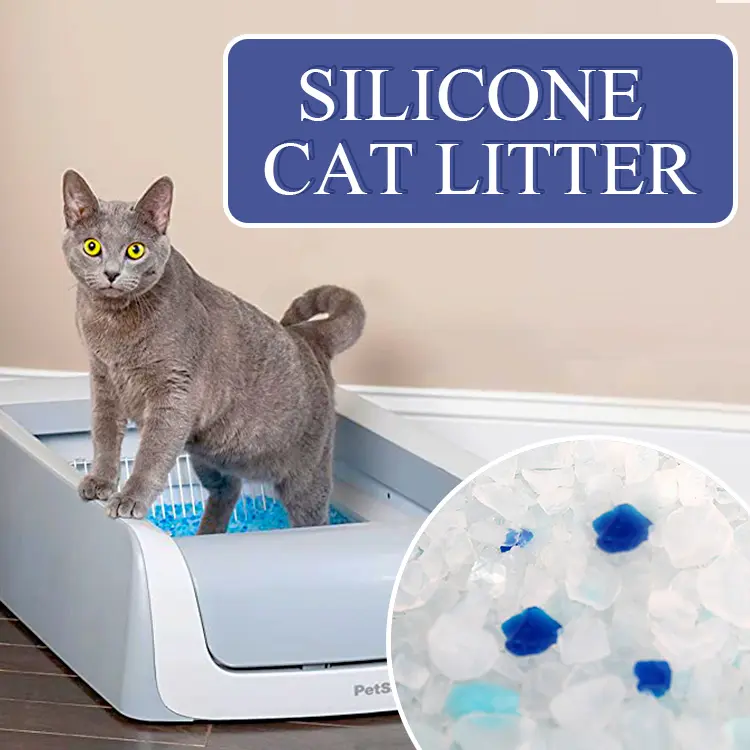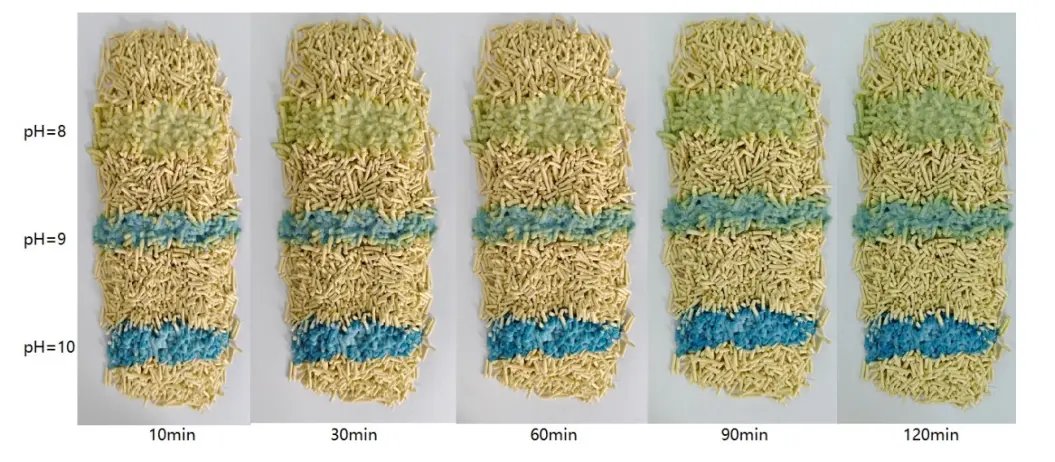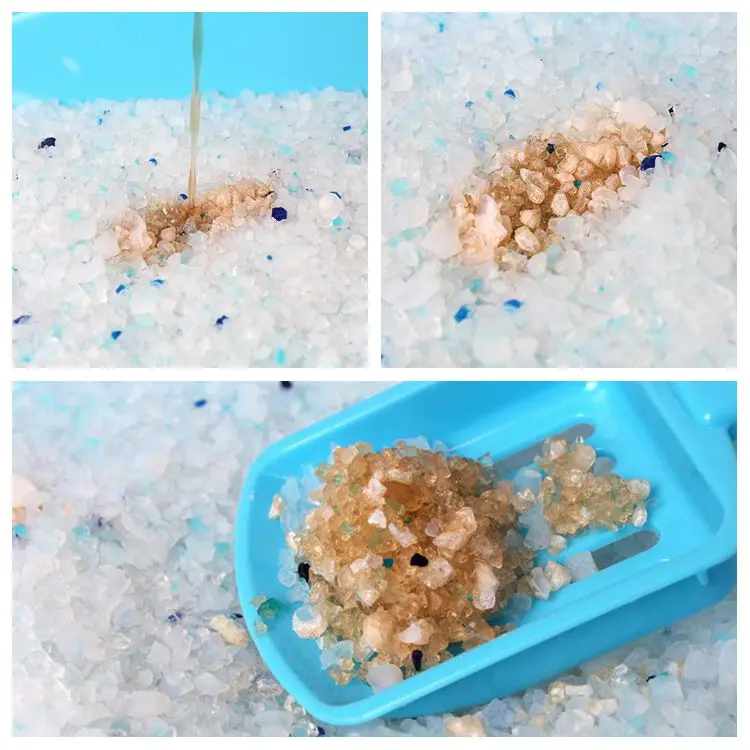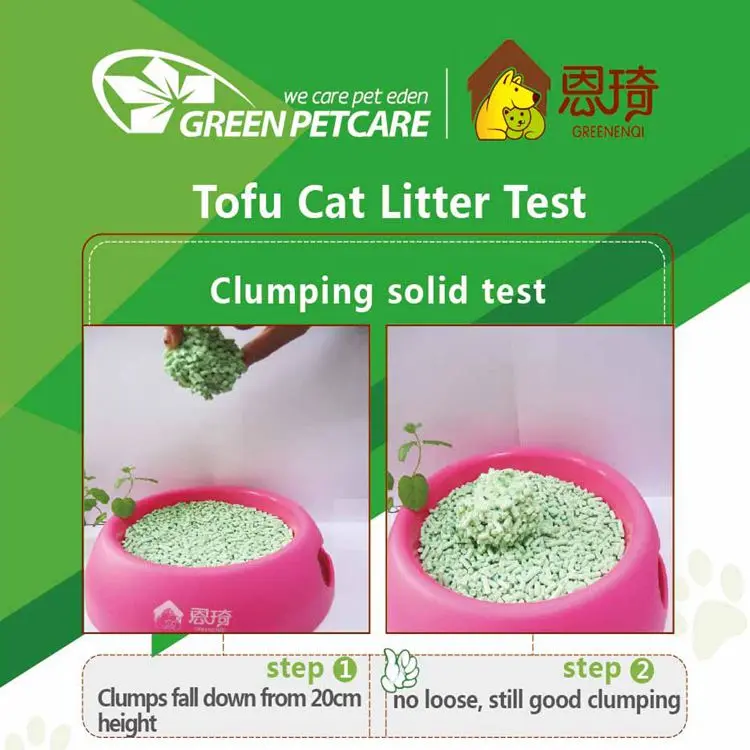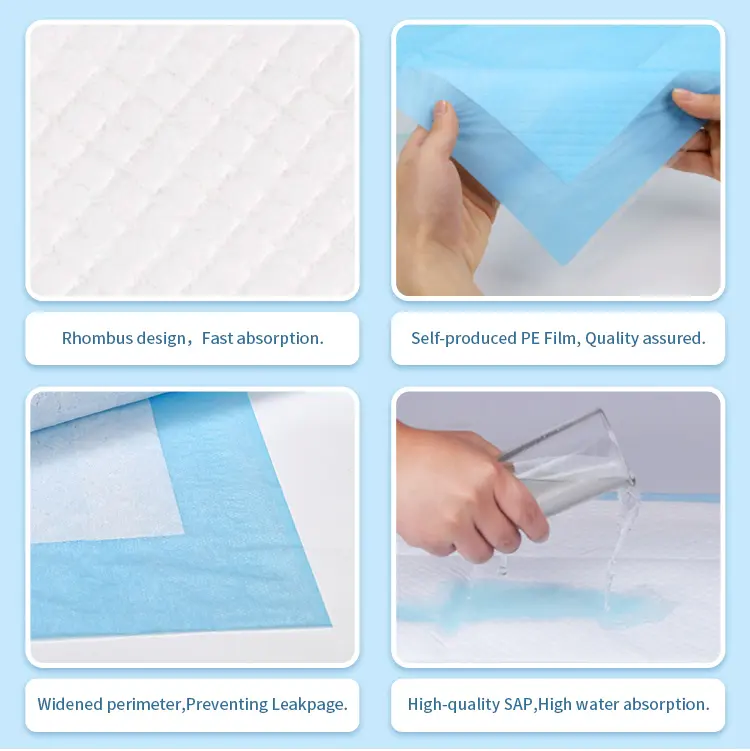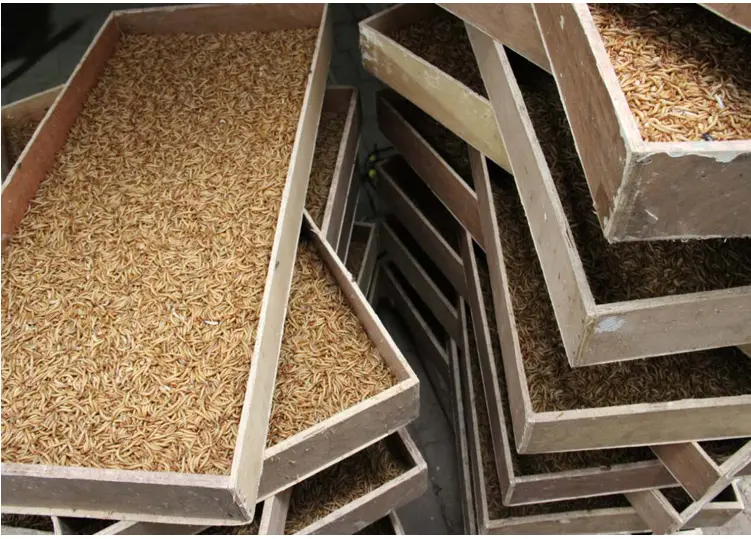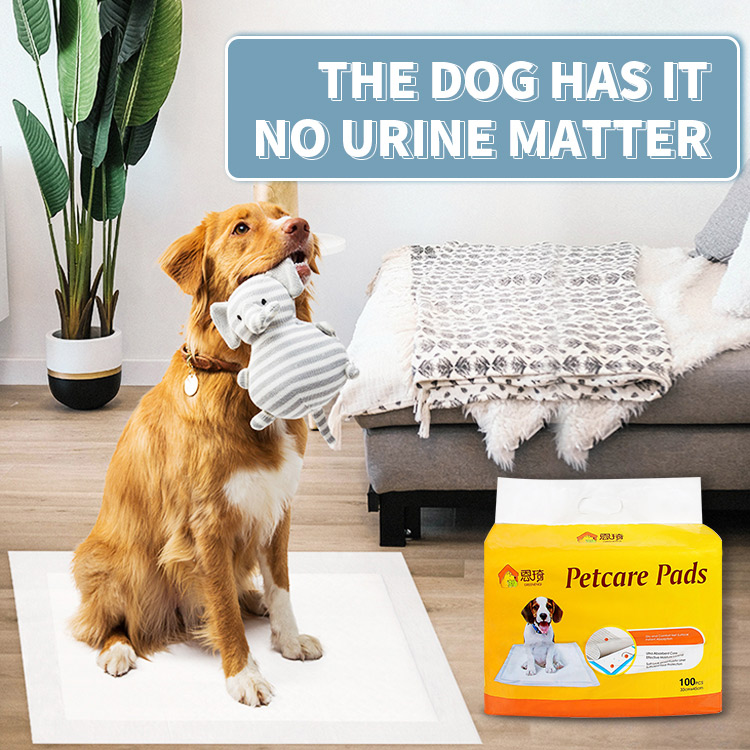Choosing the Best Option for Your Feline Friend
When it comes to selecting the best cat litter for your furry companions, two popular options have emerged as top contenders: tofu litter and pine litter. Both choices offer unique benefits and can cater to the diverse needs of pet owners. This article will compare tofu litter and pine litter, helping you make an informed decision while also highlighting the exceptional products offered by Green Pet Care Co., Ltd.
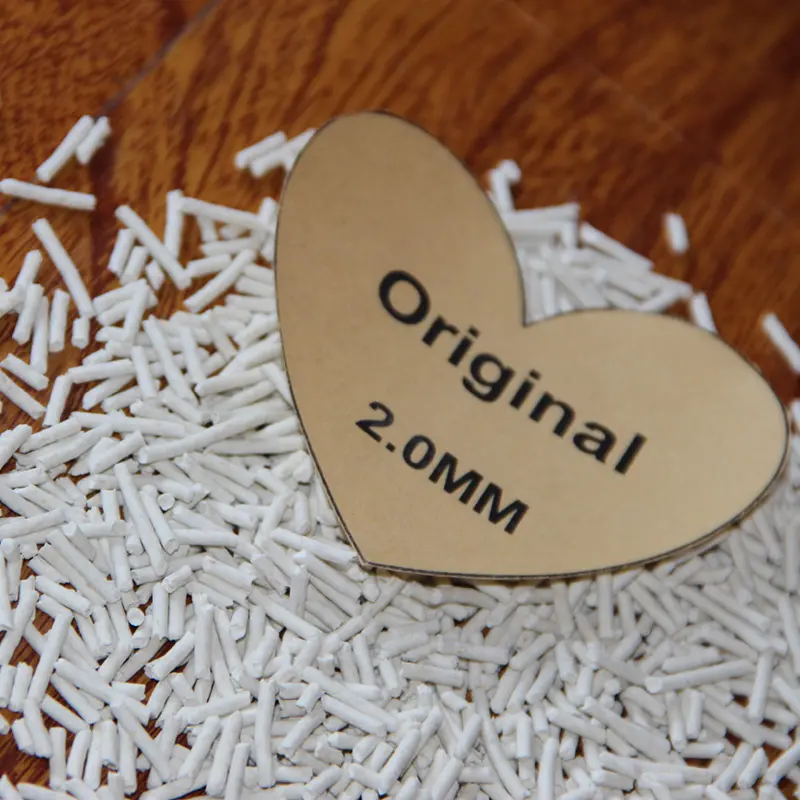
Understanding Tofu Litter
Tofu litter is made from processed soybean husks, a byproduct of tofu production. This eco-friendly option has gained popularity due to its natural composition and various benefits:
1. Biodegradable and Eco-Friendly
Tofu litter is 100% biodegradable, making it a sustainable choice for environmentally conscious pet owners. When disposed of, it breaks down naturally, minimizing its impact on landfills. Unlike traditional clay litters, which can take hundreds of years to decompose, tofu litter helps reduce your carbon footprint and supports eco-friendly practices.
2. Excellent Absorption
One of the standout features of tofu litter is its exceptional absorbent properties. It effectively controls moisture and odors, keeping your litter box fresh for longer periods. The clumping nature of tofu litter makes it easy to scoop, ensuring a cleaner litter box. This efficient absorption is particularly important for households with multiple cats, where odor control is paramount.
3. Low Dust and Hypoallergenic
Tofu litter produces minimal dust compared to traditional clay litters, making it a healthier option for both pets and owners, particularly those with allergies. Its natural composition reduces the risk of respiratory issues for sensitive cats. For cats with allergies or sensitivities, tofu litter offers a gentle alternative that promotes a healthier living environment.
4. Comfortable Texture
Cats are often picky about the texture of their litter. Tofu litter has a soft and gentle texture, making it comfortable for your feline friend to walk on, which can encourage regular use of the litter box. Cats often prefer materials that resemble natural substrates, and tofu litter mimics the softness of grass or soil.
5. Natural Odor Control
Tofu litter effectively absorbs and neutralizes odors due to its high absorbency. The natural components of tofu litter, including the soybean husks, work to eliminate smells rather than merely masking them. This is especially beneficial for multi-cat households, where odor control is essential for maintaining a pleasant home environment.
Exploring Pine Litter
Pine litter is derived from shredded pine wood and is a popular choice among pet owners for its natural properties. Here’s a closer look at the advantages of pine litter:
1. Natural and Biodegradable
Similar to tofu litter, pine litter is made from natural materials and is biodegradable. It breaks down over time, making it an eco-friendly option for responsible pet owners. Choosing biodegradable litter helps reduce the environmental impact of pet ownership.
2. Absorbent and Odor Control
Pine litter has excellent absorbent capabilities, effectively soaking up moisture and neutralizing odors. The natural aroma of pine helps mask unpleasant smells, ensuring a fresher environment for both pets and owners. Pine litter's natural scent can create a more pleasant experience compared to synthetic fragrances often found in traditional litters.
3. Low Dust Levels
Pine litter typically produces less dust than traditional clay litters, promoting better air quality in your home. This is especially beneficial for cats with respiratory issues or sensitivities. Reduced dust levels can lead to a cleaner living space for both you and your pet.
4. Lightweight and Easy to Handle
Pine litter is generally lighter than clay-based options, making it easier for pet owners to handle during cleaning and refilling. This can be a significant advantage for those with larger litter boxes or multiple cats. The lightweight nature of pine litter simplifies the process of maintaining a clean litter box.
5. Natural Absorption and Clumping
While pine litter absorbs moisture effectively, it does not clump in the same way that tofu litter does. Instead, it absorbs moisture and breaks down into sawdust, which can be raked or scooped out. This difference in absorption methods can affect how often you need to change the litter entirely.
Comparing Tofu Litter and Pine Litter
1. Absorption and Clumping
Both tofu litter and pine litter have excellent absorption properties. However, tofu litter offers superior clumping abilities, making it easier to scoop out waste and maintain a clean litter box. Pine litter may require more frequent changing, as it does not clump as effectively. The clumping feature of tofu litter is particularly beneficial for busy pet owners who need a quick and efficient cleaning process.
2. Odor Control
While both litters control odors well, tofu litter excels due to its ability to clump and trap moisture. Pine litter neutralizes smells effectively but may require more frequent changing to maintain freshness. Pet owners who prioritize odor control may find tofu litter to be the superior choice.
3. Environmental Impact
Both options are biodegradable and eco-friendly. However, tofu litter stands out as a more sustainable choice due to its use of a byproduct from tofu production. Pine litter, while natural, may require more resources in terms of processing and transportation. Choosing tofu litter can support local agriculture and promote sustainability.
4. Texture and Comfort
Tofu litter offers a softer, more comfortable texture for cats, which can be appealing for picky litter box users. Pine litter, while comfortable, may not provide the same level of softness. Cats often prefer litter that feels natural and comfortable under their paws, which can influence their litter box habits.
5. Cost Considerations
Cost can be a determining factor for many pet owners. While both tofu and pine litters are competitively priced, prices may vary based on the brand and packaging. It's essential to consider not just the upfront cost but also how often you'll need to replace the litter. Tofu litter's clumping ability may lead to less frequent changes, potentially saving you money in the long run.
Recommendations for Pet Owners
When choosing between tofu litter and pine litter, consider your cat's preferences, your cleaning habits, and your environmental values. Some cats may prefer the soft texture of tofu litter, while others might be comfortable with the natural feel of pine litter.
1. Test Both Options
If you’re unsure which type of litter your cat will prefer, consider doing a test run with both options. Set up two litter boxes, one with tofu litter and one with pine litter, and observe which one your cat favors. Cats can be particular about their litter, so it’s worth taking the time to find their preferred choice.
2. Monitor Your Cat’s Health
Be mindful of how your cat reacts to different types of litter. If you notice any signs of discomfort, such as reluctance to use the litter box, excessive grooming, or changes in behavior, it may be worth exploring other litter options. Monitoring your cat’s health and habits is essential for ensuring their well-being.
3. Consider Environmental Impact
For pet owners who are passionate about sustainability, choosing biodegradable and eco-friendly options like tofu litter or pine litter aligns with your values. Both litters offer environmental benefits, but tofu litter’s production process might have a lower overall impact on resources.
4. Cleaning Habits
Consider how much time you’re willing to dedicate to cleaning the litter box. If you prefer a low-maintenance option, tofu litter’s clumping nature may be more appealing, while pine litter may require more frequent changes to maintain cleanliness.
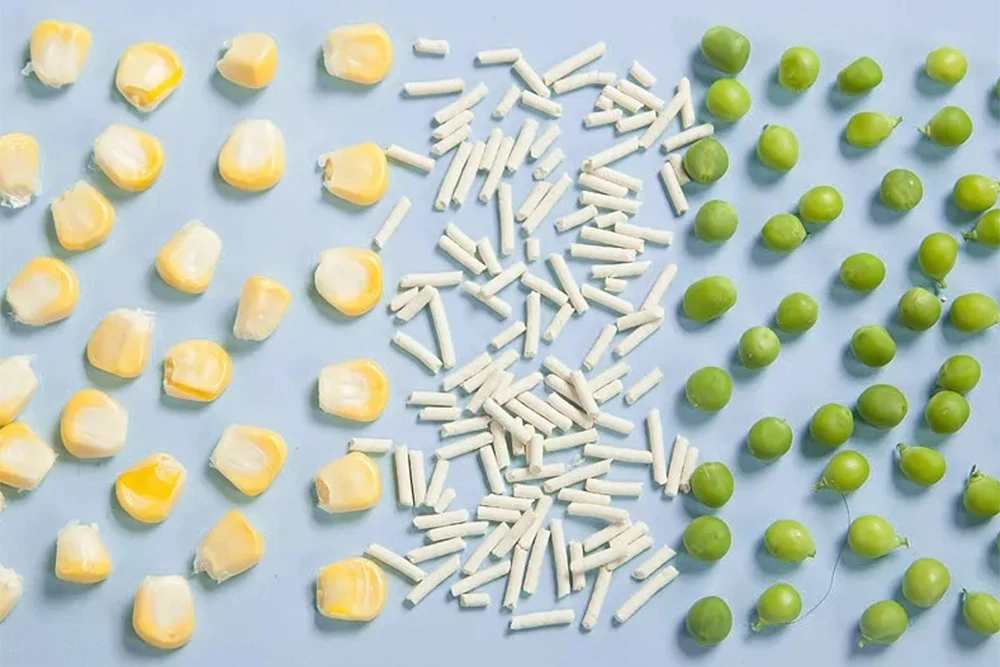
Environmental Benefits
Tofu litter is gaining traction among eco-conscious pet owners, especially when compared to traditional clay litters, which are often made from sodium bentonite clay. The environmental benefits of tofu litter are significant and multifaceted.
1. Biodegradability:Tofu litter is 100% biodegradable, as it is made from natural soybean husks. In contrast, traditional clay litters can take hundreds of years to decompose in landfills. According to the U.S. Environmental Protection Agency (EPA), approximately 2 million tons of cat litter end up in landfills annually. When disposed of, tofu litter breaks down naturally, contributing less to landfill waste. In a life-cycle analysis, products that biodegrade within a year can significantly reduce the burden on waste management systems.
2. Sustainable Sourcing:Tofu litter is derived from a byproduct of tofu production, which means that it utilizes materials that would otherwise go to waste. This process not only helps reduce waste but also supports sustainable agricultural practices. By using a product derived from an existing industry, tofu litter diminishes the need for mining and extraction activities associated with traditional clay litter. For instance, the mining of sodium bentonite can lead to habitat destruction and other ecological disruptions.
3. Lower Carbon Footprint:The production of tofu litter typically involves less energy and fewer resources compared to clay litter. A study published in the journal Environmental Science & Technology found that the extraction and processing of clay litter contribute significantly to greenhouse gas emissions. In contrast, tofu litter’s production involves fewer energy-intensive processes, leading to a smaller carbon footprint. Choosing tofu litter can therefore be a meaningful step toward reducing an individual's overall environmental impact.
4. Healthier Indoor Environment:Tofu litter produces less dust than traditional clay litters, which can contribute to respiratory issues in both pets and humans. Studies have shown that dust from clay litters can exacerbate asthma and other respiratory conditions. Tofu litter’s hypoallergenic properties make it a better choice for households with allergies or sensitivities. The lack of harmful chemicals in tofu litter further promotes a healthier indoor environment.
5. Positive Consumer Reception:Tofu litter has been well received in various markets, with many consumers recognizing the importance of sustainability. In recent years, brands focusing on eco-friendly pet products have reported significant sales growth. For example, a market research report by Grand View Research noted that the global eco-friendly cat litter market is expected to grow at a compound annual growth rate (CAGR) of 9.5% from 2021 to 2028. This growth reflects an increasing consumer preference for sustainable products.
In summary, choosing tofu litter over traditional clay litters offers substantial environmental benefits, including biodegradability, sustainable sourcing, a lower carbon footprint, and a healthier indoor environment. By opting for tofu litter, pet owners can contribute to a more sustainable future and make a positive impact on the planet while ensuring their pets’ comfort and health.
The Difference Between Tofu Cat Litter and Pine Cat Litter in Odor Control
Odor control is a crucial consideration for pet owners when selecting cat litter. Both tofu litter and pine litter have distinct properties that influence their ability to neutralize and manage odors effectively.
1. Absorption Properties:Tofu litter excels in moisture absorption due to its fine texture and high absorbency rate. The clumping ability of tofu litter allows it to trap moisture and odors efficiently. A study published in the Journal of Environmental Health found that clumping litters generally provided better odor control compared to non-clumping types. When waste is deposited, tofu litter forms solid clumps that can be easily removed, preventing odors from spreading throughout the litter box.
On the other hand, pine litter absorbs moisture well but does not clump in the same manner. Instead, it breaks down into sawdust, which absorbs moisture and odor but may require more frequent changes to maintain freshness. Pine litter’s natural scent also helps mask odors, but it may not be as effective as the clumping mechanism of tofu litter in terms of long-lasting odor control.
2. Natural Odor Neutralization:Tofu litter is effective at neutralizing odors due to its natural composition. The soybean husks contain natural enzymes that combat odors. According to a survey conducted by the Pet Products Association, many cat owners report that tofu litter significantly reduces litter box smells compared to traditional clay litters. Users have shared testimonials noting that tofu litter keeps the litter box smelling fresh for extended periods, even in multi-cat households.
Pine litter, while having a pleasant natural pine aroma, relies more on its scent to mask odors. While many users appreciate the fresh scent, some find that it may not be sufficient for heavy users, especially in larger households or with particularly odorous pets. Anecdotal evidence suggests that users sometimes have to change pine litter more frequently than tofu litter to maintain a fresh smell.
3. User Preferences and Behavior:Pet owners’ preferences can significantly influence their choice of litter based on odor control. A survey conducted by PetMD found that 62% of cat owners prioritize odor control when selecting litter. Tofu litter’s superior clumping ability and effective odor-neutralizing properties may lead to higher customer satisfaction. Many users report being able to go longer between complete litter changes with tofu litter, contributing to overall convenience and cost-effectiveness.
4. Environmental Considerations:Both tofu and pine litters are considered eco-friendly, but their approaches to odor control differ. Tofu litter’s natural absorbency means it can often outlast traditional litters, which contributes to less waste overall. Pine litter, while biodegradable, may need to be replaced more frequently, potentially leading to more litter being disposed of over time.
In conclusion, while both tofu litter and pine litter offer effective odor control, tofu litter tends to excel due to its clumping properties and natural odor-neutralizing enzymes. For pet owners seeking a litter that provides long-lasting freshness with minimal maintenance, tofu litter may be the superior choice. Ultimately, the decision will depend on personal preferences and the specific needs of your household.

Factors to Consider When Choosing Cat Litter
Transitioning your cat to a new litter type can be a delicate process, and several factors should be taken into consideration to ensure a smooth change. Here are key aspects to keep in mind:
1. Cat’s Preferences:Cats are creatures of habit, and their preferences for litter can be quite strong. A study published in the journal Applied Animal Behaviour Science found that cats tend to prefer litter that mimics natural substrates they would encounter in the wild. Therefore, if your cat is used to a certain texture, transitioning to a drastically different type of litter may not be well received. For instance, if you are moving from traditional clay litter to tofu litter, your cat may need time to adjust to the new texture.
2. Gradual Transition:A gradual transition can help your cat adapt more comfortably. Start by mixing the new litter with the old litter in a 75/25 ratio, favoring the old litter. Over a week or two, gradually increase the ratio of the new litter until the old litter is phased out completely. This method allows your cat to acclimate to the new texture and scent without feeling overwhelmed. Research indicates that gradual transitions reduce the likelihood of aversion or litter box avoidance.
3. Monitoring Behavior:During the transition, it is essential to monitor your cat’s behavior. Watch for signs of stress or reluctance to use the litter box, such as excessive grooming, scratching at the box, or vocalizations. If your cat exhibits these behaviors, it may indicate that they are unhappy with the new litter. In such cases, it may be necessary to revert to the old litter or try a different type that aligns better with their preferences.
4. Multiple Litter Boxes:If you have multiple cats, consider providing multiple litter boxes with different litter types during the transition period. This approach allows each cat to choose the litter they prefer, reducing competition and stress. The American Association of Feline Practitioners recommends having one more litter box than the number of cats in the household to accommodate individual preferences.
5. Environmental Factors:The litter box environment can also influence your cat's acceptance of new litter. Ensure the litter box is clean, easily accessible, and located in a quiet area. A study published in Veterinary Clinics of North America emphasizes that cats are sensitive to their litter box conditions, and any changes in cleanliness or location can lead to litter box avoidance.
6. Scent Considerations:Cats have a strong sense of smell, and the scent of the litter can significantly affect their willingness to use it. Tofu litter has a neutral scent, while pine litter has a natural pine aroma. If you are transitioning to a litter with a strong scent, it may be beneficial to introduce it gradually and observe how your cat reacts. Some cats may prefer unscented options, while others might be indifferent to the fragrance.
In summary, transitioning your cat to a new litter type requires careful consideration of your cat’s preferences, gradual introduction, and environmental factors. By following these guidelines and being observant of your cat’s behavior, you can facilitate a smooth transition and ensure that your feline friend remains comfortable and happy in their litter box. Making informed decisions based on your cat’s needs will ultimately lead to a positive experience for both you and your pet.
Cat litter Cost
When considering cat litter options, cost is an essential factor for many pet owners. Both tofu litter and pine litter have their respective price points, and understanding these costs, along with other factors, can help in making an informed decision.
1. Price Per Bag:Tofu litter generally has a higher upfront cost compared to pine litter. For instance, a 5-pound bag of tofu litter can range from $15 to $25, while a similar quantity of pine litter typically ranges from $10 to $20. While the initial investment for tofu litter may be higher, it’s crucial to consider the overall value it provides. Tofu litter’s superior clumping ability and odor control can lead to less frequent litter changes, ultimately saving money over time.
2. Cost Per Use:When evaluating litter costs, it’s essential to consider the cost per use rather than just the price per bag. Tofu litter tends to last longer due to its effective moisture absorption and clumping capabilities. For instance, many users report that they can use tofu litter for two to three weeks before needing a complete change, whereas pine litter may require more frequent changes due to its less effective odor control. This longevity means that, although the initial price may be higher, the overall cost of using tofu litter can be lower in the long run.
3. Environmental Cost Considerations:Beyond monetary costs, pet owners should consider the environmental costs associated with different types of litter. Tofu litter is made from biodegradable materials and is a byproduct of tofu production, making it a more sustainable option. According to a report from the World Animal Protection organization, switching to sustainable products, including biodegradable litter, contributes positively to environmental conservation. While tofu litter may be more expensive initially, its eco-friendly nature and biodegradability add value for environmentally conscious consumers.
4. Consumer Preferences and Trends:Market trends indicate a growing preference for eco-friendly products, which can influence pricing dynamics. According to a report by Transparency Market Research, the global eco-friendly cat litter market is expected to witness significant growth, with an anticipated CAGR of 7.2% from 2021 to 2028. This trend may lead to increased demand for tofu litter and similar products, potentially affecting prices and availability. Many consumers are willing to invest more in sustainable and health-conscious options, reflecting a shift in consumer behavior.
5. Special Offers and Bulk Buying:To offset costs, pet owners can look for special offers or bulk buying options. Some retailers provide discounts on bulk purchases, making it more economical to buy larger quantities of tofu litter or pine litter. Additionally, subscribing to pet supply services can yield savings over time, as many companies offer discounts for repeat customers.
6. Total Cost of Ownership:It’s crucial to consider the total cost of ownership, which includes the price of the litter, the frequency of changes, and the disposal costs. Tofu litter’s efficiency may lead to less waste overall, which can reduce disposal fees if you pay for waste collection based on volume. In contrast, using more pine litter due to its shorter lifespan can increase overall costs.
In conclusion, while tofu litter may come with a higher upfront cost than pine litter, evaluating the overall value, longevity, and environmental impact reveals a more nuanced picture. Pet owners should consider the total cost of ownership, including frequency of changes and potential savings from using a more effective litter. By prioritizing quality, sustainability, and the long-term well-being of their pets, consumers can make informed choices that align with their values and budget.
About Health
Health considerations are paramount when selecting cat litter, as they can significantly impact both the pet and the pet owner’s well-being. Tofu litter and pine litter each present distinct health aspects worth considering.
1. Respiratory Health:One of the primary health concerns related to cat litter is dust. Traditional clay litters often produce fine dust particles that can irritate the respiratory tracts of both cats and humans. According to a study published in the Journal of Feline Medicine and Surgery, dust from clay litters can exacerbate asthma and other respiratory conditions. Tofu litter, in contrast, produces minimal dust due to its finer texture and moisture-absorbing properties, making it a safer option for households with allergy-prone individuals or pets.
Pine litter also generates some dust, although it typically produces less dust compared to clay-based options. However, the scent of pine can sometimes trigger allergies in sensitive individuals. When transitioning to a new litter, it is vital to monitor your cat’s respiratory health, especially if they have pre-existing conditions.
2. Chemical Exposure:Chemical exposure is another important factor to consider. Some traditional clay litters contain additives, fragrances, or synthetic chemicals that can be harmful to pets. A survey conducted by the American Society for the Prevention of Cruelty to Animals (ASPCA) found that many pet owners are unaware of the potential dangers of these additives. Tofu litter is made from natural soybean husks and does not contain harmful chemicals, making it a safer choice for cats and their owners.
Pine litter, while natural, often contains phenols that can be irritating to cats if ingested or inhaled. Studies have shown that long-term exposure to phenols can lead to respiratory problems and skin irritation. Therefore, it's essential to choose pine litters that are specially processed to minimize these compounds.
3. Urinary Health:The choice of litter can also impact a cat's urinary health. A study in Veterinary Clinics of North America highlighted the importance of encouraging cats to use their litter box consistently, as this is crucial for preventing urinary tract issues. Tofu litter’s clumping properties make it easier for cats to use the litter box since it allows for easy removal of waste, which can promote regular bathroom habits. In contrast, if a cat dislikes the litter texture or smell, it may avoid using the box altogether, potentially leading to urinary problems.
4. Hygiene and Cleaning:Hygiene is critical in maintaining a healthy environment for pets. Tofu litter is generally easier to clean due to its clumping nature, which allows pet owners to scoop out waste more efficiently. This ease of cleaning can reduce the buildup of bacteria and odors, contributing to a healthier living space for both pets and owners.
Pine litter, while absorbent, may require more frequent changes to prevent odors and bacteria from accumulating. A study published in the Journal of Veterinary Internal Medicine found that improper litter maintenance can lead to various health issues in pets, including infections. Pet owners should ensure that whichever litter type they choose is regularly maintained to prevent hygiene-related health concerns.
5. Allergic Reactions:Lastly, some cats may develop allergies or sensitivities to specific litter types. A survey by the Pet Health Council found that up to 10% of cats may experience allergic reactions to certain litters. Symptoms can include sneezing, excessive grooming, and avoidance of the litter box. It’s crucial to observe your cat’s behavior when introducing a new litter and consult a veterinarian if you notice any adverse reactions.
In summary, health considerations play a vital role in selecting cat litter. Tofu litter generally presents fewer respiratory risks, lower chemical exposure, and better hygiene compared to traditional clay litters. Pine litter, while also a natural option, requires careful selection to avoid potential health concerns associated with phenols. By prioritizing the health and well-being of their pets, owners can make informed choices that create a safe and healthy environment.

About Tofu Litter and Pine Litter
When it comes to cat litter, misconceptions abound, and understanding the facts can help pet owners make informed choices. Here are some common misconceptions about tofu litter and pine litter.
1. Tofu Litter Is Just a Fad:One common misconception is that tofu litter is merely a passing trend or fad. However, the increasing demand for eco-friendly and sustainable pet products indicates a shift in consumer preferences. According to a report by Global Market Insights, the eco-friendly pet products market is projected to exceed $24 billion by 2025. Tofu litter is gaining popularity due to its biodegradable nature and effective odor control, indicating that it meets the growing demand for sustainable solutions.
2. Pine Litter Is Completely Chemical-Free:Another misconception is that all pine litters are entirely free from chemicals. While pine is a natural material, many commercial pine litters may contain additives or fragrances to enhance scent or clumping ability. A study published in the Journal of Applied Animal Welfare Science found that these additives can pose health risks to pets. Pet owners should carefully read labels and choose pine litters that are minimally processed and free from harmful chemicals.
3. Tofu Litter Cannot Control Odor:Some pet owners mistakenly believe that tofu litter does not provide effective odor control compared to traditional litters. In reality, tofu litter contains natural enzymes that neutralize odors and form clumps for easy removal. A survey conducted by the Cat Fanciers' Association found that 78% of cat owners reported that tofu litter effectively controlled odors, even in multi-cat households. This odor control is attributed to the litter’s ability to absorb moisture and trap waste efficiently.
4. Pine Litter Is Too Messy:While some pet owners think pine litter is messy due to its sawdust-like texture, many brands now offer high-quality pine litter that minimizes mess. A study from the American Animal Hospital Association noted that using a litter mat can help contain any stray litter particles. Additionally, many users report that pine litter clumps well and is easy to clean, making it a suitable option for maintaining a tidy litter box.
5. All Natural Litters Are More Expensive:Some consumers believe that natural litters, such as tofu and pine, are always more expensive than traditional clay litters. While it’s true that certain brands of tofu litter may have a higher initial cost, the long-term value can offset this price. For example, tofu litter’s superior clumping and moisture-absorbing properties often mean less frequent litter changes, which can save money over time. Moreover, with the rising trend of eco-friendly products, some retailers are offering competitive pricing on natural litters.
6. Switching Litters Will Stress My Cat:Many pet owners worry that changing litters will stress their cats, leading to behavioral issues. While it’s true that some cats can be sensitive to changes, a gradual transition can alleviate this concern. A study published in the Journal of Veterinary Behavior found that slowly introducing a new litter by mixing it with the old litter can help cats adjust without undue stress. Furthermore, many cats adapt well to tofu litter, appreciating its softer texture and minimal dust.
In conclusion, misconceptions about tofu litter and pine litter can lead to confusion among pet owners. By debunking these myths, pet owners can make more informed choices that prioritize their cat’s health, hygiene, and comfort. As the market for sustainable pet products continues to grow, understanding the facts surrounding different litter options becomes increasingly important.
Why Choose Green Pet Care Co., Ltd.?
At Green Pet Care Co., Ltd., we understand the importance of providing high-quality, eco-friendly pet products. Established in 2014, our company specializes in the research, processing, and export of various pet products, including both tofu and pine cat litter.
Our Commitment to Quality
Diverse Product Range: We offer a wide range of cat litter options, including traditional bentonite sand, silica sand, pine sand, and our popular Duofu and corn cat litters. Our product diversity ensures that you can find the perfect litter for your cat's needs.
Affordability: Our products are competitively priced, ensuring you can provide the best for your pets without breaking the bank. We believe that quality pet products should be accessible to all pet owners.
Export Experience: With years of export experience, we have successfully established a presence in European, American, and Southeast Asian markets, earning a reputation for quality and reliability. Our commitment to customer satisfaction has helped us build lasting relationships with clients around the world.
Creating a Healthy Environment for Pets
Our mission is to create a healthy, green paradise for pets. We prioritize environmentally friendly practices in our production processes and strive to ensure that our products are safe and effective for both pets and their owners. We invest in research and development to continuously improve our products and meet the evolving needs of our customers.
Customer Satisfaction
We take pride in the positive feedback we receive from our customers. With a monthly sales volume reaching 2,000 tons for our cat litter products and 500 tons for our Duofu and corn cat litters, it’s clear that pet owners trust us to deliver high-quality products. Our commitment to quality and customer service has established us as a leader in the pet product market.
Stylish and Functional Pet Products
In addition to cat litter, we also offer stylish pet food bowls and toilets that are favored by consumers for their design and quality. With monthly sales reaching 2 million units, our products are designed to meet the needs of modern pet owners. We believe that functionality and aesthetics can go hand in hand, providing pet owners with products that enhance their homes while serving practical purposes.
Environmental Initiatives
At Green Pet Care Co., Ltd., we are committed to sustainability and reducing our environmental impact. We actively seek out environmentally friendly materials and practices in our production processes. By choosing our products, you can feel good knowing that you are supporting a company that prioritizes the health of our planet.
Conclusion
Choosing the right cat litter is essential for both your pet’s comfort and your home’s cleanliness. Tofu litter and pine litter each offer unique advantages, making them suitable options for different needs. At Green Pet Care Co., Ltd., we are proud to provide high-quality, eco-friendly cat litter options, ensuring your pets can enjoy a safe and healthy environment.
Explore our product range today and discover why so many pet owners trust us for their feline needs. Let’s create a healthy and green paradise for our beloved pets together! With our commitment to quality, affordability, and sustainability, Green Pet Care Co., Ltd. is your go-to source for all your pet product needs. Whether you choose tofu litter, pine litter, or one of our other exceptional products, you can rest assured that you are making a responsible choice for your pet’s well-being and the health of our planet.
If you have any needs, please feel free to contact us.

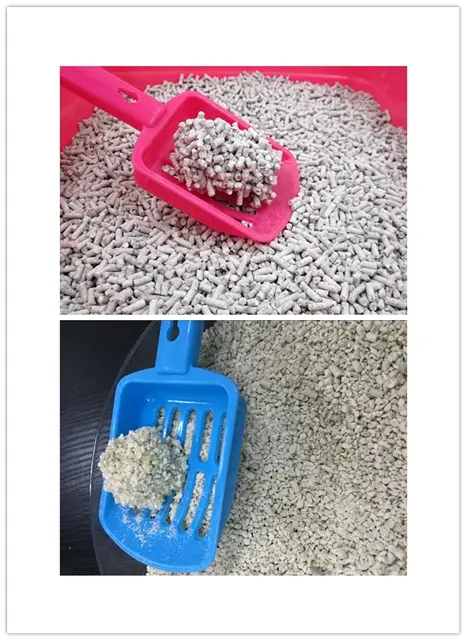

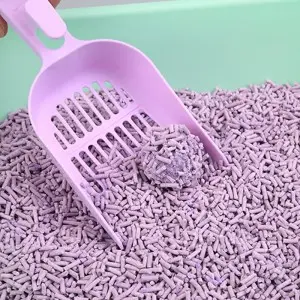
267.webp)

